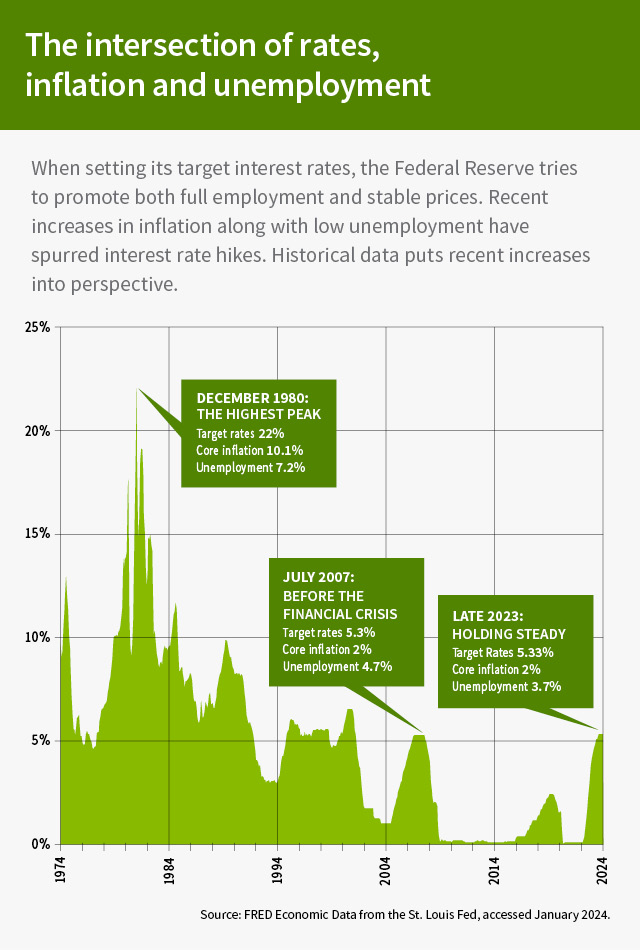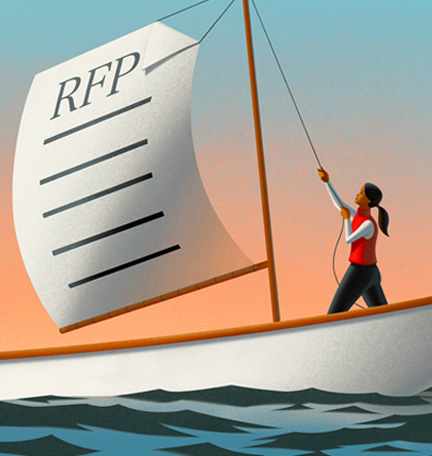When it comes to cash management today, you should consider all your options.
After nearly 20 years of yielding minimal returns, cash is now paying upwards of 4%, which is welcome news to many. But maximizing the value of your cash isn’t as simple as stashing it in a high-yield account. You’ll want to consider your financial goals and then your product options. Take some time to survey your financial position and cash’s role in it.
- How much of your portfolio do you need to cover everyday expenses and unexpected life events?
- Would you save money in the long run by paying down debt rather than stockpiling cash?
- Do you care more about easy access to your money or higher returns?
Answering these questions now can help you make better choices about where to put your cash even as interest rates inevitably change, says Holly Clark, Wealth Advisor at Regions Bank.
“Interest rate cycles are tough to predict,” says Clark. “In this cycle, rates have gone up quickly, but interest rates won’t stay this high forever, so we want to keep our eyes on the ball and be nimble.”
Money market accounts vs. CDs
The two most popular places to deposit cash are money market accounts and certificates of deposit (CDs).
- Money market accounts offer higher rates than a typical savings account and provide easy access to your funds. You can withdraw or transfer money and write checks several times a month before having to pay a nominal fee. In exchange for that access, you won’t earn as much interest as you might on a CD.
- CDs typically pay higher rates than money market accounts, but they also lock up your funds for a fixed term, which can range from a month to several years. The term also affects the CD rate, which depends on expectations about future rates. If the market believes interest rates will be higher in five years than they’ll be in three months, longer-term CDs will pay more and vice versa.
You select the term when you buy the CD, giving you the chance to make trade-offs between timelines and returns.
“Just make sure the timeline is appropriate because withdrawing early from a CD may result in a penalty,” Clark says. “If there’s a chance you’ll need the money early, it would be better to leave it in a money market account.”
Both money market accounts and CDs are insured by the Federal Deposit Insurance Corporation (FDIC) up to FDIC limits. To determine your specific coverage levels, consult the FDIC’s calculator.

Laddering your cash for returns and flexibility
If you have a clear picture of how much cash you’ll need and when, you can further enhance your returns and hedge against falling rates with a laddering strategy.
Consider putting cash you’ll need in the short term into a money market account. Consider putting other cash into CDs with staggered maturity dates based on when you’ll need it.
“Your money market might be paying 3%, and an eight-month CD might be paying 4.5%, while a 12-month CD is paying 5%,” Clark says. “When you use laddering to blend the average of those rates, you’re getting a better yield than if you just put it all in a money market account.”
Laddering does require paying attention to redemption dates so you can redeploy the cash as needed and maximize returns, but for many people, the higher returns are worth the extra effort.
Navigate your choices with the right guide
Although cash management isn’t as simple as depositing money into an account, you may want to get guidance from your Private Wealth Advisor. Cash should be balanced along with your investment portfolio and assets.
Talk to your Regions Wealth Advisor about:
- A holistic look at your financial position that will help you maximize the value of your cash.
- Building and maintaining a laddering strategy for your cash.
Interested in talking with an advisor but don’t have one?
Find a contact in your area.











